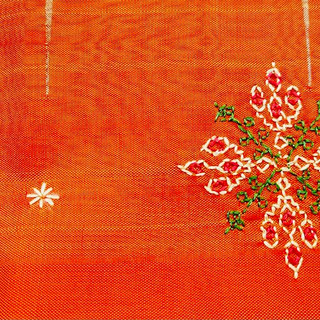Dharwad Kasuti
- Swetha Jain
- Sep 27, 2020
- 2 min read
Kasuti Embroidery
A style that has found its origins in the seven scenic hills, kasuti is a hand woven variety of embroidery. Basically found in the Silk pallus, Kasuti embroidery consists of interwoven geometric patterns that make up for this interesting design. It has mostly been adapted from the temple designs and architectural musings of the surroundings.
This style originated way back in the 7th century during the Chalukya period.The name Kasuti is derived from the words Kai (meaning hand) and Suti (meaning cotton), indicating an activity that is done using cotton and hands.The women courtiers in the Mysore Kingdom in the 17th century were expected to be adept in 64 arts, with Kasuti being one of them. The Kasuti embroidery features folk designs influenced by rangoli patterns of Karnataka, mirror work embroidery and gold & silver thread embroidery were mostly used for special occasions like weddings.
In Karnataka Sarees embroidered with Kasuti were expected to be a part of the bridal trousseau of which one saree made of black silk with Kasuti embroidery called Chandrakali saree was of premier importance.
Kasuti work involves embroidering very intricate patterns like gopura, chariot, palanquin, lamps and conch shells. Locally available materials are used for Kasuti. The pattern to be embroidered is first marked with charcoal or pencil and then proper needles and thread are selected. The work is laborious and involves counting of each thread on the cloth. The patterns are stitched without using knots to ensure that both sides of the cloth look alike. Different varieties of stitches are employed to obtain the desired pattern. Some of the stitches employed are Gavanthi, Murgi, Negi and Menthi. Gavanthi is a double running stitch used for marking vertical, horizontal and diagonal lines, Murgi is a zig-zag stitch, Negi is a running stitch and Menthi is a cross stitch resembling fenugreek seeds.
Kasuti work has grown beyond its traditional boundaries to be used in other dress materials like the Mysore silk saree. A Kasuti centre was set up in Hubli, Karnataka by the Department of Social Welfare, Government of Karnataka to encourage the Kasuti culture and also provide a single roof for the rural women to showcase their craft.
Content Source: Internet













Comments